History of Irkutsk
Foundation of Irkutsk
The oldest traces of people who lived in the territory of Irkutsk are about 50 thousand years old. Settlements and burial grounds dating back to the Stone, Bronze, and Iron Ages were discovered on both banks of the Angara River.
Today’s Irkutsk originates from a fortified settlement laid by the Russian explorer Yakov Pokhabov in the summer of 1661. The territory on the bank of the Angara River at its confluence with the Irkut River (hence the name of the settlement) was favorable for agriculture and cattle breeding. The waterway provided communication with the Yenisei River and Lake Baikal.
In 1682, this settlement became the center of the Irkutsk Voivodeship, which included all the fortified settlements of the Baikal region. In 1686, Irkutsk was given the status of a town. After the settlement of Russian-Chinese relations by the Nerchinsk treaty (1689), trade caravans on the way to China (furs, tea, sugar, fabrics) began to pass through Irkutsk. In 1700, about 1,000 people lived in Irkutsk.
In 1719, the town became the center of the Irkutsk Province as part of the Siberian Governorate. In 1730, the merchant Lanin opened an ironworks. In 1745, the first stone residential building was built. In 1762, after the abolition of the state monopoly on the export of furs, the “golden age” of the Irkutsk merchants began. By the end of the 18th century, merchants began to play a leading role in the civil life of Irkutsk.
More historical facts…
Irkutsk - the gate of the Russian Empire to the Far East
In 1764, the Irkutsk Governorate was formed. In the 1770s, the Irkutsk fair was officially opened. In the 1780s, a public library, a theological seminary, a school, and a printing house appeared in the town. In 1790, the dilapidated walls of the fortress were demolished. Irkutsk became a kind of “window to the East” of the Russian Empire, all expeditions organized to the Far East, Mongolia, China, Alaska were formed in this town. From here the settlement of the Amur banks began.
In 1807, the first hospital was opened with private funds. In 1826, the first exiled Decembrists arrived in Irkutsk. In 1836, the first private bank was opened. In 1839, the first public library was opened. In the 1840s, Irkutsk turned into the “capital of the Lena River gold”, a place of concentration of capital of gold miners. In 1856, the population of Irkutsk was about 24,100 people.
In 1864, a telegraph line connected Irkutsk with St. Petersburg. In June 1879, a big fire almost completely destroyed the historic center of the town. The decline of the gold industry began in the late 1880s. In 1897, about 51,000 people lived in the city.
According to the initial project, the Trans-Siberian Railway was supposed to go along a shorter route north of Lake Baikal, away from Irkutsk. However, the project was changed and the first train arrived in Irkutsk in 1898. The railway caused the opening of new transport enterprises, revitalized coal mining and the forest industry, and contributed to the influx of population.
Irkutsk in the 20th century and beyond
During the First World War, more than 10 thousand residents of Irkutsk were mobilized. The industrial enterprises of the pre-revolutionary city were small and mostly artisanal. Most people were employed in trade, services, gardening, and handicraft production. During the years of the Civil War, power in Irkutsk changed several times.
In 1922-1923, Irkutsk was the center of Mongol-Buryat Autonomous Oblast, since 1930 - the center of the East Siberian Krai, since 1937 - Irkutsk Oblast. In 1923, the first stadium was built. The population of Irkutsk was 88,264 people. In 1936, the first reinforced concrete bridge named after Lenin was opened across the Angara River. In the 1930s, an aircraft factory, a metallurgical plant, a sewing factory, a soap factory, and other enterprises were built in Irkutsk.
In 1939, the population of the city was about 250,000 people. During the Second World War, about 20 thousand Irkutsk residents were drafted into the Red Army, about half of them were killed in battles. During the war, some enterprises from the western regions of the USSR were evacuated to Irkutsk. They remained in the city after the war.
In 1958, the Irkutsk Hydroelectric Power Station was commissioned. At this time, the city mainly consisted of wooden one-story houses. In the 1960-1970s, large-scale housing and industrial construction unfolded. In 1970, the population was about 451,000 people.
Until the early 1990s, Irkutsk remained one of the largest industrial centers of the Russian Soviet Federative Socialist Republic with high-tech mechanical engineering: aircraft manufacturing, instrument making, radio electronics; as well as the production of metallurgical and mining equipment, automotive parts, and machine tools. Other major industries were the production of building materials, furniture, printing, light, and food industries. The five largest factories of the city employed over 40 thousand people. In 1989, about 626,000 people lived in Irkutsk.
After the transition to a market economy, a lot of engineering and light industry enterprises were unable to adapt to the new economic conditions and closed. Over the next years, the population of the city began to decline. In 2008, the population of Irkutsk declined to 575,000 people. In 2009, population growth began again. In 2011, Irkutsk celebrated its 350th anniversary.
Picturesque streets of Irkutsk
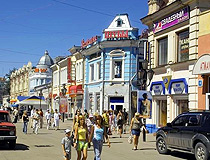
In the historic center of Irkutsk
Author: Sergey Bulanov
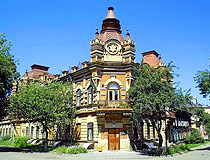
Feinberg House in Irkutsk
Author: Sergey Bulanov
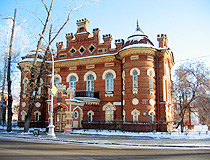
Irkutsk Museum of Local Lore
Author: Phil Johnson
Irkutsk - Features
Irkutsk is a unique, old city, the capital of Eastern Siberia.located on the banks of the Angara River in the immediate vicinity of the reservoir formed by the dam of the Irkutsk Hydroelectric Power Station, about 76 from Lake Baikal. The nearest large city is Ulan-Ude located 457 km east of Irkutsk, on the other side of Lake Baikal. The distance to Moscow is about 5,200 km.
The Angara River divides Irkutsk into the right-bank and left-bank parts. The length of the river within the city is 29 km, the width under the Old Angara Bridge in the city center is about 300 meters; there are more than 30 islands on the river.
The climate of Irkutsk is sharply continental with significant daily and annual fluctuations in air temperature. Winter is cold, long and lasts more than 5 months (from late October to early April). The coldest month of the year is January, the average temperature is minus 17.8 degrees Celsius. Summer in the first half is hot and dry, in the second half there are heavy rains. The warmest month is July, the average temperature is plus 18.3 degrees Celsius.
Irkutsk is a large industrial center of Eastern Siberia. “Irkutskenergo” is one of the largests energy companies in Russia with 3 hydroelectric power stations of the Angara River cascade with a capacity of 9 GW, thermal power plants with a capacity of 3.9 GW, as well as coal mines and regional heating systems. Irkutsk Hydroelectric Power Station produces 4.1 billion kWh per year.
The leading industrial enterprise of the city is the Irkutsk Aviation Plant, which gave the name to the current Russian aircraft manufacturing corporation “Irkut”. The plant produces military and civil aircraft and employs about 12 thousand people. Irkutsk Heavy Engineering Plant manufactures gold mining, mining and processing, and metallurgical equipment.
Irkutsk is one of the largest scientific and educational centers of Siberia. The city has a branch of the Siberian Department of the Russian Academy of Sciences with a network of scientific institutes and a number of universities, in which about 100 thousand students study.
Tourism in Irkutsk is mainly transit on the way to Lake Baikal. Foreign tourists stay in the city on average 1.5-2 days, most of them are travelers from China, Germany, and Japan. About 70% of tourists come in the summer season.
Across the left bank of the Angara, the federal highway “Baikal” Novosibirsk-Chita passes through the city. Irkutsk is the railway junction of the Trans-Siberian Railway. Irkutsk International Airport provides flights to Moscow, St. Petersburg, Vladivostok, Khabarovsk, Novosibirsk, Yakutsk. Public transport includes buses, trolleybuses, trams.
On the coat of arms of Irkutsk you can see a “babr” holding a sable in its mouth. From the 17th century, the word “babr” was used to name the Amur tiger inhabiting the Baikal region. There is an interesting story with this word.
In 1859, a large-scale reform of Russian heraldry was launched in order to correct errors accumulated over time. However, it led to new errors. The word “babr” was mostly known to local residents and the people involved in the reform decided that it was just a mistake in the Russian word “bobr” (meaning “beaver”) and approved the new description of the coat of arms of Irkutsk - a beaver holding a sable in its mouth.
However, not a single image was painted of the Irkutsk coat of arms with a beaver holding a sable in its mouth. Instead, the tiger received a large beaver tail and webbed hind legs and turned into a new, mythical animal.
Main Attractions of Irkutsk
Church in the name of the Savior of the Miraculous Image (1706-1710) - one of the first stone buildings in Irkutsk, the only building of the Irkutsk Kremlin that has survived to this day. Also, along with the Epiphany Cathedral, it is the oldest church stone building in Eastern Siberia and the Far East. Sukhe-Batora Street, 2.
Church of the Kazan Icon of the Mother of God (1885-1892) - a surprisingly picturesque Orthodox church made of bright red brick with a blue roof painted with geometric ornaments. This is one of the most beautiful buildings in Irkutsk. Barrikad Street.
Irkutsk Museum of the Decembrists (Volkonsky House). The museum exposition is located on the territory of the estates of princes Sergey Volkonsky and Sergey Trubetskoy, exiled to Siberia after the suppression of the Decembrist uprising. These houses are monuments of urban wooden architecture typical for Siberia of the 19th century. Inside, historic interiors are recreated, giving an idea of the life of princely families. Volkonsky Lane, 10 and Dzerzhinsky Street, 64.
Victor Bronstein Gallery - a private art gallery founded in 2011. The collection has more than 1.5 thousand paintings, sculptures, and graphic drawings, which makes it the largest beyond the Urals. The exhibits of the gallery belong to various areas of contemporary art. Oktyabrskoy Revolyutsii Street, 3.
The 130th Quarter (the Irkutsk Sloboda) - a historic area located on the site of a suburban quarter of the 18th century. The decision to create the Irkutsk Sloboda was made in 2008. In this quarter, you can see restored traditional wooden houses of Irkutsk with souvenir shops, cafes, restaurants, and hotels. 3 Iyulya Street.
Sculpture “Babr”. “Babr” is the Turkic name for a jaguar or panther; the Yakuts gave this name to the Ussuri tiger. For several centuries, the image of this beast is depicted on the coat of arms of Irkutsk, it is one of the symbols of the city. In 2012, at the entrance to the 130th quarter, a bronze sculpture of a babr 3.5 meters high and 4 meters long was installed.
Lower Embankment of the Angara - a street located in the northern part of the historic center of Irkutsk, the oldest city embankment. In the 18th century, a stone cathedral of the Epiphany was erected here. Large-scale reconstruction of the embankment was carried out in 2010-2011. Today, this place is the heart of Irkutsk. Nearby you can find all the main churches and monuments, as well as enjoy beautiful views of the majestic Angara River. Nizhnyaya Naberezhnaya Street.
Irkutsk Regional Museum of Local Lore. The 19th-century mansion houses the history department, in separate buildings you can visit a natural science section and a studio where furniture and household items of the 19th and 20th centuries are presented.
On the territory of the Irkutsk Sloboda, the exhibition “Window to Asia” is open, telling about the development of Siberia and the accession of this part of the world to the Russian Empire. Tourists who decide to go to the icebreaker “Angara” will learn a lot of interesting things about shipping on Lake Baikal, and visitors who are interested in the personality of Grigory Rasputin can go to the museum named after him. Karl Marx Street, 2.
Icebreaker “Angara”. On the outskirts of Irkutsk, in the Solnechny microdistrict, you can see one of the world’s first icebreakers - the oldest surviving to this day. Produced in England, it was moved to Lake Baikal to pave the way in the ice for the ferry “Baikal” in 1900. In 1987, it was decided to restore this icebreaker and turn it into a museum ship. Here you can see unique photographs, documents, personal belongings of crew members. Marshal Zhukov Avenue, 36a
Art Museum named after Vladimir Sukachev - one of the largest museums of fine art in Siberia. Vladimir Sukachev (1849-1920) was a Russian public figure, philanthropist, collector, founder of the Irkutsk Art Gallery. The exposition presents the masterpieces of Russian, Eastern, West European, and Siberian art of the 15th-20th centuries. Lenina Street, 5.
Museum-Estate of Vladimir Sukachev. This picturesque wooden mansion twisted with carvings is a masterpiece of wooden architecture. The estate is a complex of buildings, some of which (including the main house) were restored in the 2000s. Inside, there is a memorial exhibition dedicated to the family of Vladimir Sukachev. Dekabrskikh Sobytiy Street, 112b.
Roman Catholic Church (1881). The Catholic parish was founded in Irkutsk in 1820. Most of the parishioners were Poles, who were exiled to Siberia after the Polish uprising. Therefore, the Catholic Church of the Assumption of the Virgin Mary is often called the Polish Church. In 1974-1978, the church was restored, it housed the organ hall of the Irkutsk Regional Philharmonic. Today, religious services and organ music concerts are held here. Sukhe-Batora Street, 1.
House of Merchants Shastin (House of Europe) - a manor of the late 19th - early 20th centuries also known as a “lace house” because of a beautiful carved decor reminiscent of the finest lace. The architectural style of the building is defined as Russian Baroque. The house was saved from demolition and restored from old photographs at the initiative of the French Association for the Preservation of Architectural Monuments in 1999. Fridrikha Engelsa Street, 21.
“Taltsy” - an architectural and ethnographic complex located about 40 km from Irkutsk. Here you can see a collection of monuments of the 17th-20th centuries, mostly wooden buildings from villages and towns of the region flooded during the construction of the Irkutsk Hydroelectric Station.


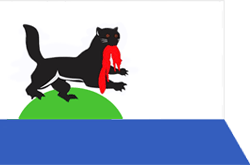
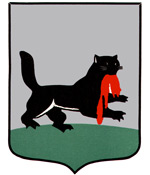
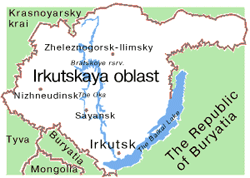



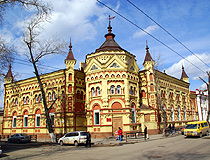
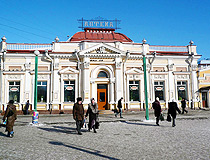
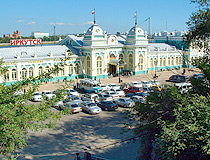
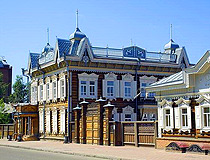
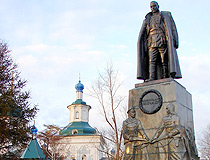
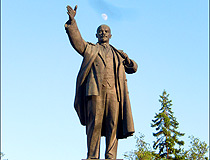
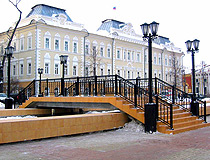
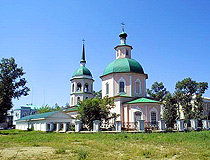
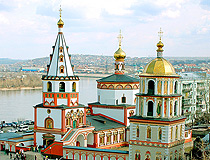
The comments of our visitors